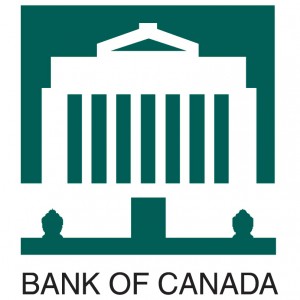Bank of Canada Monetary Policy Report
Last week, the Bank of Canada released their October Monetary Policy Report. Below are the key facts and findings regarding the future outlook of the Canadian economy.
The Monetary Policy Report forecasts the growth of the economy each year in order to reach full capacity around the end of 2015. The Canadian economy is expected to grow by 1.6% in 2013, 2.3% in 2014, and 2.6% in 2015.
Stephen S. Poloz, the Governor of the Bank of Canada, states in the Press Release three important domestic risks:
1. Given projection for global growth, exports therefore, could be even weaker than assumed. If competitive challenges were greater than anticipated, this is a risk that could be materialized and would result in an even larger loss of market share.
2. On the upside, as confidence returns, domestic momentum builds faster than expected. Business sentiment could improve rapidly if foreign demand becomes more stable and the domestic demand continues to grow at a moderate pace.
3. The unwinding of household imbalances, which are still elevated. Household spending remains strong but there is a slower growth of household credit and higher mortgage interest rates.
The Bank is expecting a more stable balance between foreign and domestic demand to be achieved over time. This will in turn result in more self-sustaining growth for the economy. In recent months, the inflation rate has remained low. This reflects the increase competition in the retail sector, the slow-moving economy, and other specific related sectors.
Overall, the Bank of Canada judges that the monetary policy currently in place remains appropriate. It has decided to maintain the target for the overnight rate at 1%.
Given the above, the next increase in prime is not expected until 2016, which is more great news for variable rate mortgage holders.
To view the full October Bank of Canada Monetary Policy Report, click here.
To view the Press Release of the announcement of the Bank of Canada Monetary Policy Report, click here.
If you have any questions regarding the above, please give us call to discuss.
604-588-4466 info@brokersmart.ca
For more blog posts on real estate or mortgage related topics, click here .

